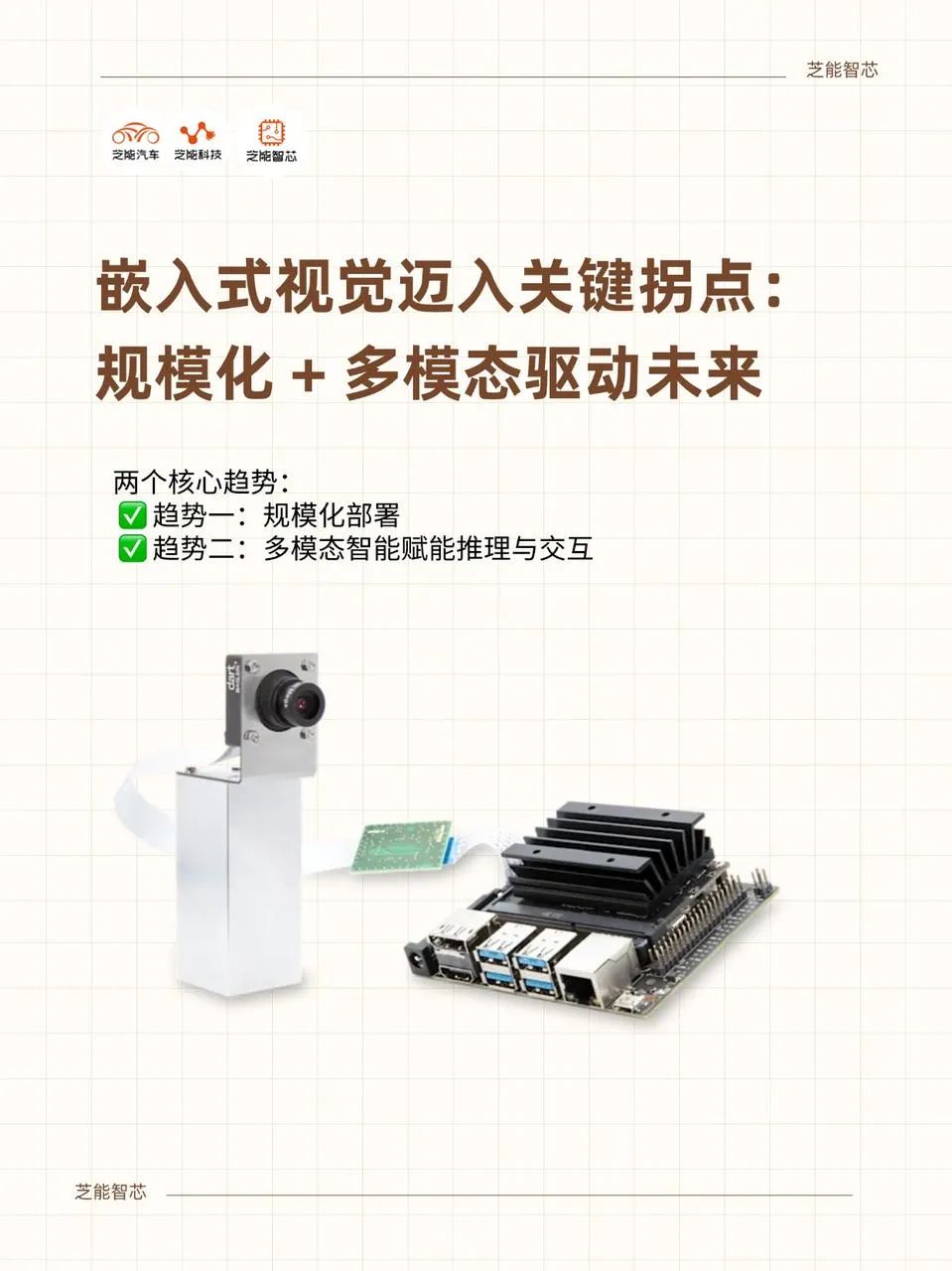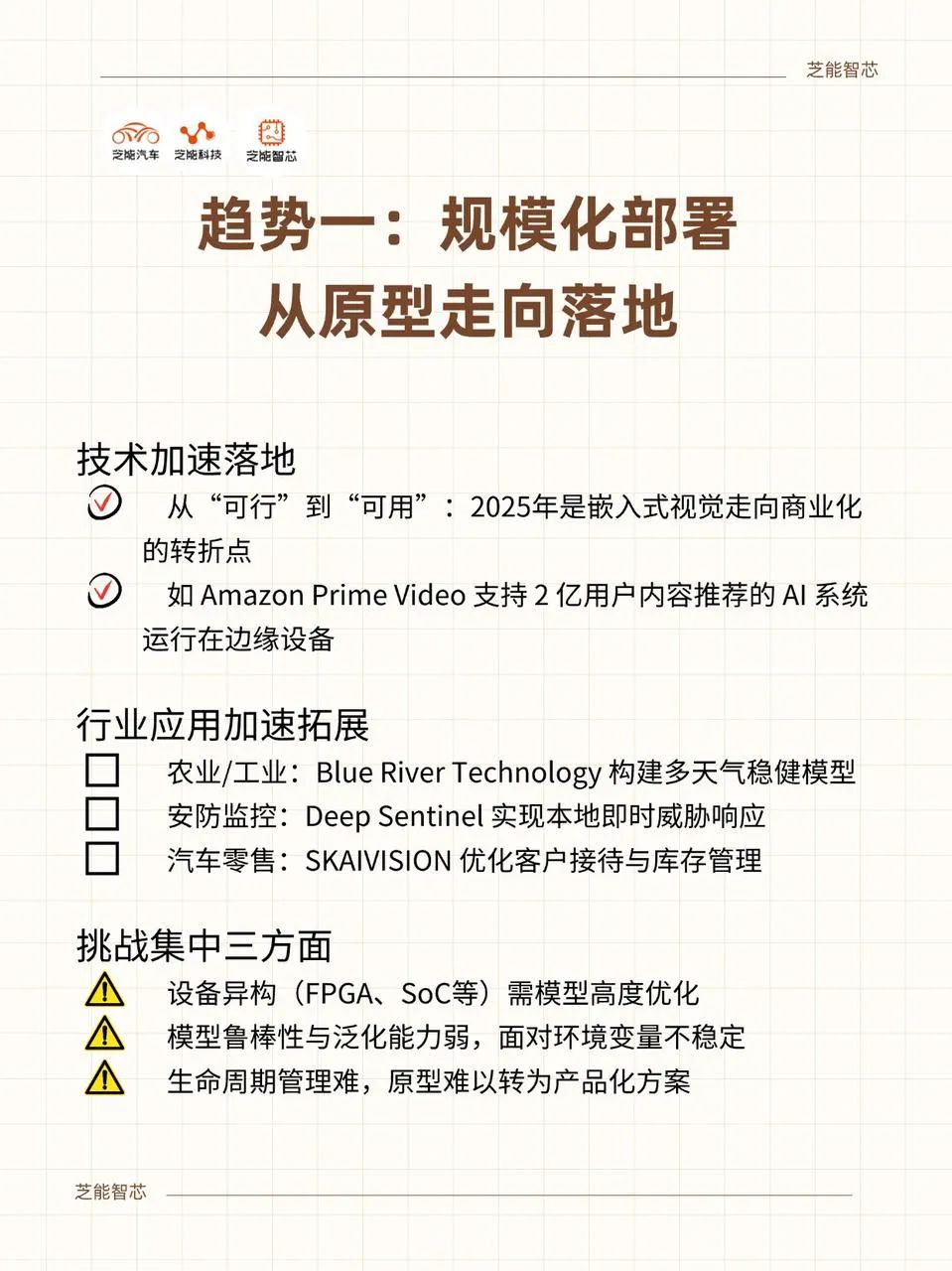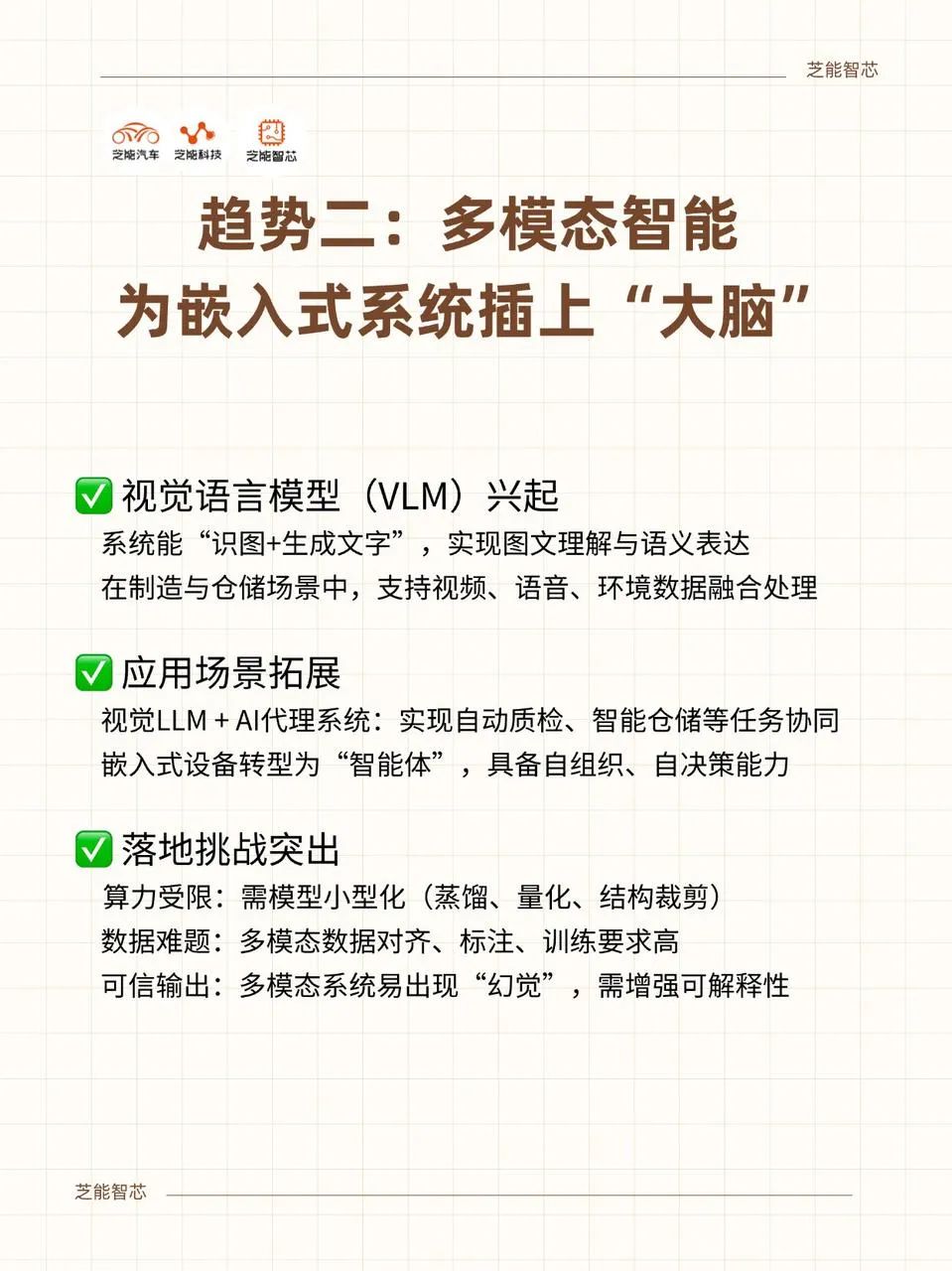Embedded Vision, Mass Deployment, and Multimodal Technology Advances Catalyze Industrial Transformation
![]() 05/15 2025
05/15 2025
![]() 652
652
Produced by Zhineng Zhixin
Embedded AI and vision technology are at a pivotal juncture, transitioning from concept validation to widespread application. The Embedded Vision Summit 2025 has been a source of immense inspiration.
Two key trends currently dominate the landscape:
◎ Firstly, embedded vision systems and AI are swiftly moving from lab prototypes to large-scale commercial deployment, reflecting both technological maturity and the pressing need for real-world implementation; ◎ Secondly, the rise of multimodal intelligence, particularly the practical application of Vision-Language Models (VLM) and AI agent technology, is dramatically expanding the comprehension and reasoning capabilities of embedded AI systems.

Part 1
Trend 1: Mass Deployment
From Prototype to Industrial Implementation

Over the past decade, embedded vision technology has progressively shifted from algorithmic innovation to system integration. However, 2025 marks a distinct turning point: from 'feasible' to 'usable' and from pilot projects to full commercialization.
Embedded computer vision now supports content optimization and recommendation systems for 200 million Prime Video users globally, illustrating that AI vision can not only operate on edge devices but also serve hundreds of millions of users efficiently.
With the continuous maturation and popularization of vision AI technology, various sub-sectors are developing stable and scalable AI vision products in an end-to-end manner.
◎ For instance, in agriculture and industrial automation, Blue River Technology demonstrates how to develop robust vision models that adapt to various weather and crop conditions, starting from AI prototype systems in farmland; ◎ In security and surveillance, Deep Sentinel equips cameras with the ability to instantly assess and respond to threats through edge deployment, achieving a seamless loop from perception to action; ◎ In automotive retail and experiential marketing, SKAIVISION optimizes dealers' customer reception and inventory management processes using embedded vision technology, significantly enhancing physical operational efficiency.
These cases exemplify the evolution of vision AI from single-function tools to systematic, scenario-based solutions.
Collectively, these cases signal that the success of embedded vision systems hinges not solely on algorithmic breakthroughs but also on systems engineering victories encompassing 'end-to-end system capabilities,' 'edge deployment optimization,' and 'industry scenario adaptability.'
Despite this, the large-scale implementation of vision AI still confronts numerous challenges. In a summit panel discussion, industry experts highlighted three core issues:
◎ Firstly, system heterogeneity and hardware limitations necessitate highly optimized inference models to avoid performance bottlenecks across diverse devices like FPGA, VPU, and SoC; ◎ Secondly, robustness testing and generalization ability are crucial under complex and variable lighting, weather, and background conditions to prevent 'off-target' recognition; ◎ Thirdly, transitioning from PoC (Proof of Concept) to true product lifecycle management involves creating a system that can be sustainably iterated and maintained, transforming prototypes into mature, engineerable, and serviceable solutions. This requires engineers to focus not only on model performance but also on low-power deployment, software and hardware co-optimization, and a productization mindset aligned with business objectives.
Part 2
Trend 2: Multimodal Intelligence
Empowering Embedded Systems with Cognitive and Reasoning 'Brains'

While mass deployment serves as the 'infrastructure' for embedded AI to become a reality, multimodal intelligence acts as the core engine for the future 'evolution' of system intelligence.
'Vision-Language Models' (VLM) are becoming the bridges that connect visual input with language output. On edge devices, VLM enables systems to not only recognize images but also comprehend and articulate explanations in natural language, elevating embedded vision systems from 'seeing' to 'speaking' and 'understanding.'
The ascendancy of Vision-Language Models (VLM) is driving profound changes in embedded systems in three pivotal areas:
◎ Firstly, semantic understanding capabilities are markedly enhanced. Unlike traditional systems limited to image classification and object detection, VLM can generate textual descriptions based on scene recognition, achieving higher-level semantic modeling. ◎ Secondly, systems are advancing towards genuine multimodal data fusion. In smart manufacturing and smart warehousing scenarios, VLM supports the unified processing of video streams, voice commands, and environmental data, fostering a new system architecture of 'unified model + multiple inputs.' ◎ Finally, human-computer interaction becomes more intuitive and natural. Embedded devices evolve beyond mere sensory terminals into intelligent agents that 'understand, see, and speak,' opening up vast application prospects in fields such as security, retail, and even smart cockpits.
The 'Vision LLM and Multi-Agent Collaboration System' showcases applications in automated quality inspection and smart warehousing, where the system collaborates with multiple agents through vision LLM to complete tasks, significantly enhancing autonomy and adaptability.
By introducing the concept of 'AI agents,' where each embedded device is not merely a perception node but an intelligent entity with autonomous task planning and collaboration capabilities, we are ushering embedded AI into the era of 'self-organizing systems.'
To fully realize the potential of multimodal intelligence on edge devices, several challenges remain.
◎ Firstly, in resource-constrained environments, ensuring that large Vision-Language Models (VLM) run efficiently on edge devices with limited computing power is crucial. Model miniaturization techniques, such as model distillation, low-bit quantization (int8/4bit), and pruning and optimization of Transformer structures, are emerging as key solutions. ◎ Secondly, the construction of data and training systems cannot be overlooked. Developing enterprise-level multimodal AI systems demands high-quality data annotation, precise alignment of multi-source heterogeneous data, and efficient data pipeline management, posing heightened engineering demands. ◎ Finally, issues of safety and credibility demand attention. Multimodal systems are prone to 'hallucination' outputs due to modality interference or semantic inconsistencies. Thus, enhancing the controllability and interpretability of model outputs is essential for their stable application in edge scenarios.
Summary
As we advance towards the future of embedded vision intelligence, it is becoming a pivotal force driving the intelligent transformation of various industries, including agriculture, manufacturing, security, retail, and streaming media.
Today, we stand at the dawn of a new era. Driven by mass deployment, embedded vision is accelerating its penetration into diverse terminal devices, endowing systems with broader 'vision' capabilities. With the support of multimodal intelligence, vision systems are evolving beyond passive 'seeing' to understanding, interacting, and even making decisions, truly embracing 'intelligence.'
In the next fifteen years, with the continuous miniaturization of hardware, the relentless pursuit of algorithm lightweighting, and the in-depth development of model collaboration, we will witness a proliferation of 'AI everywhere' intelligent scenarios, forging an integrated intelligent system spanning from edge to cloud, from machine to human, and from perception to action. It is evident that the future of embedded vision has arrived, and the most exhilarating technological evolution and application innovation have just begun!





